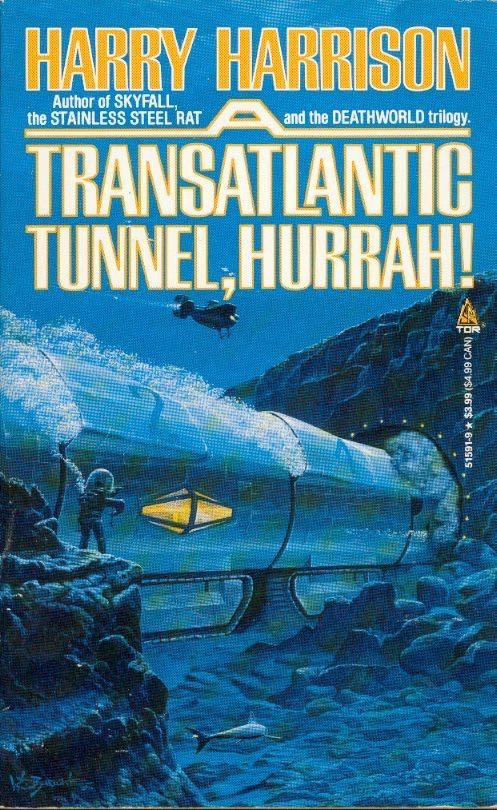A Transatlantic Tunnel, Hurrah!
Reviewed date: 2009 Aug 27
Rating: 2
254 pages
A Transatlantic Tunnel, Hurrah! inhabits a curious subgenre of science fiction: alternate history. Some fans don't consider alternate history to be science fiction at all. I'm not so picky. I just ask for a good story. Sadly, this isn't it.
Setting:
An alternate world where General Washington lost the Revolutionary War and the British Empire dominates the world well into the twentieth century. Washington's descendant, Augustus "Gus" Washington, proposes an ambitious project: a transatlantic tunnel. Such a magnificent project requires funding from no less than the Queen herself.
Plot:
Gus works feverishly to complete the transatlantic tunnel. He works out ingenious concepts like reverse underwater bridges--floating tunnel sections anchored to the seabed below to keep them in place miles below the surface. And he fights sabotage! Some unknown consortium--Gus suspects the French--want the tunnel to fail.
The verdict:
Gus completes the tunnel. The saboteurs turn out to be the shipping industry. Gus is a hero, he gets the girl, and everyone is so proud of him that they promise to give America its independence. But the book? Nothing compelling. Harrison kind of forgot that there is something far better than an undersea train: airplanes. He even shows air travel in this world, but apparently decides to ignore how that makes a transatlantic tunnel stupid and unnecessary.
Finally, there are some superfluous scenes involving a psychic who taps into the consciousness of an alternate universe: she recounts pivotal scenes where this alternate universe (that is, ours) diverges from the real universe (the one in the book.) That gives Harrison a vehicle to show the reader how clever he is to have constructed this alternate universe. Except a) we don't care (we just care that it's different), and b) it's not all that clever. I'm not impressed.
